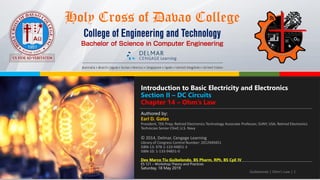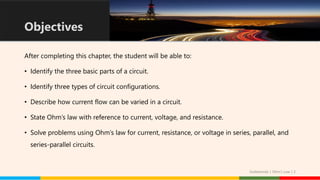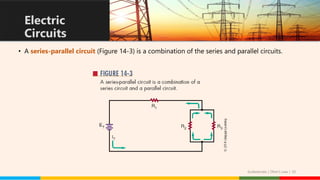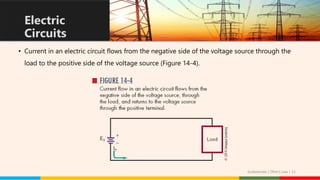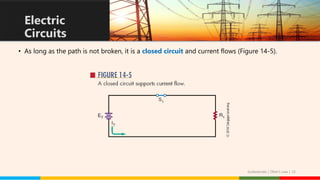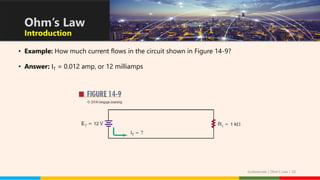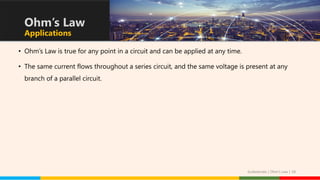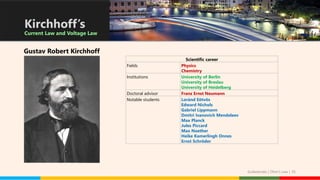This document provides an introduction to basic concepts of electricity and electronics, focusing primarily on Ohm's Law, which describes the relationship between current, voltage, and resistance in electric circuits. It outlines different types of circuit configurations (series, parallel, and series-parallel) and presents Kirchhoff's laws, which govern current and voltage in circuit junctions. The document includes examples and practice problems to help students apply these concepts effectively.
